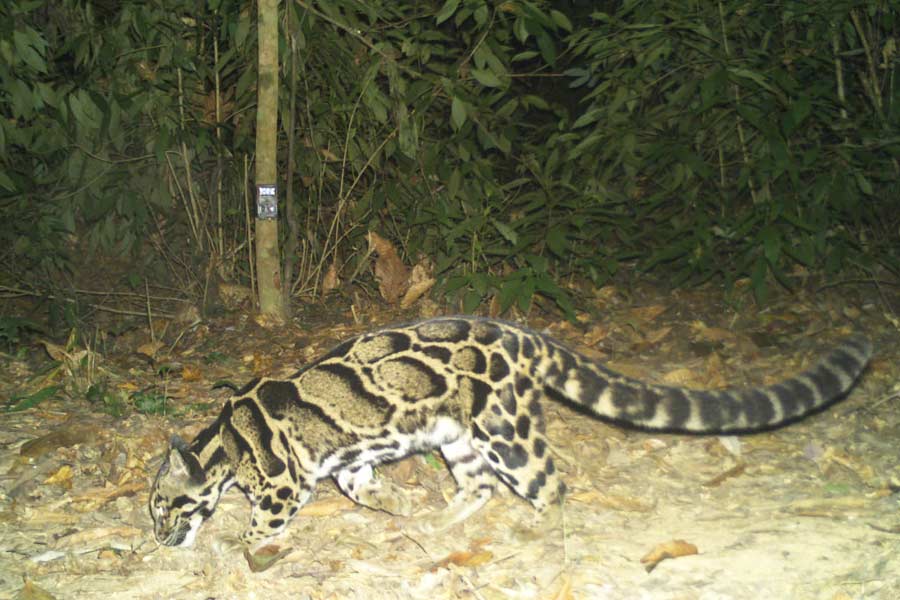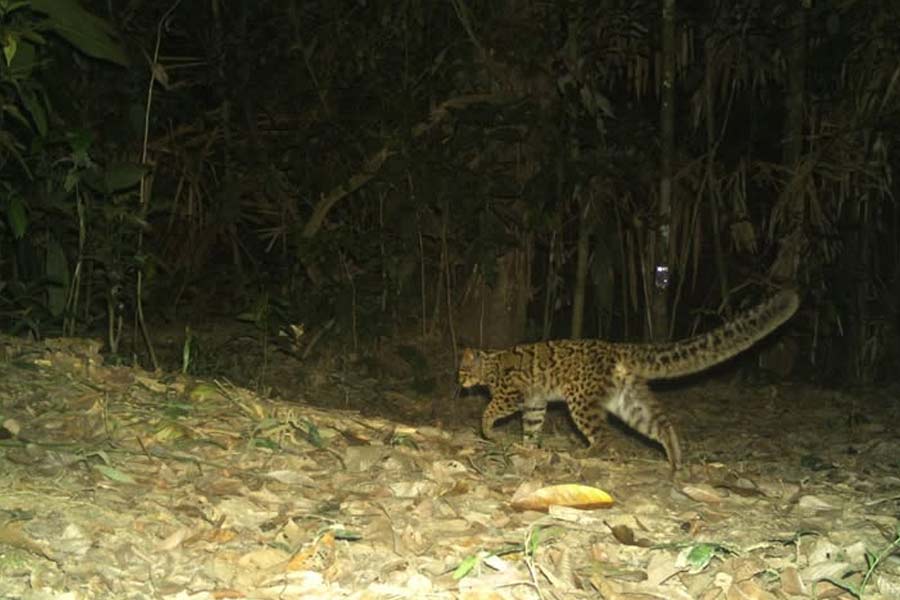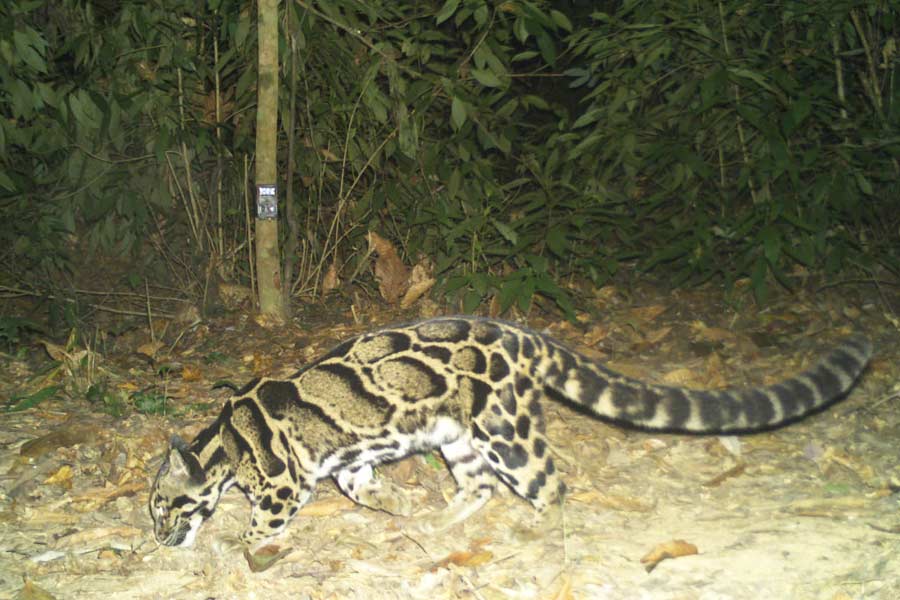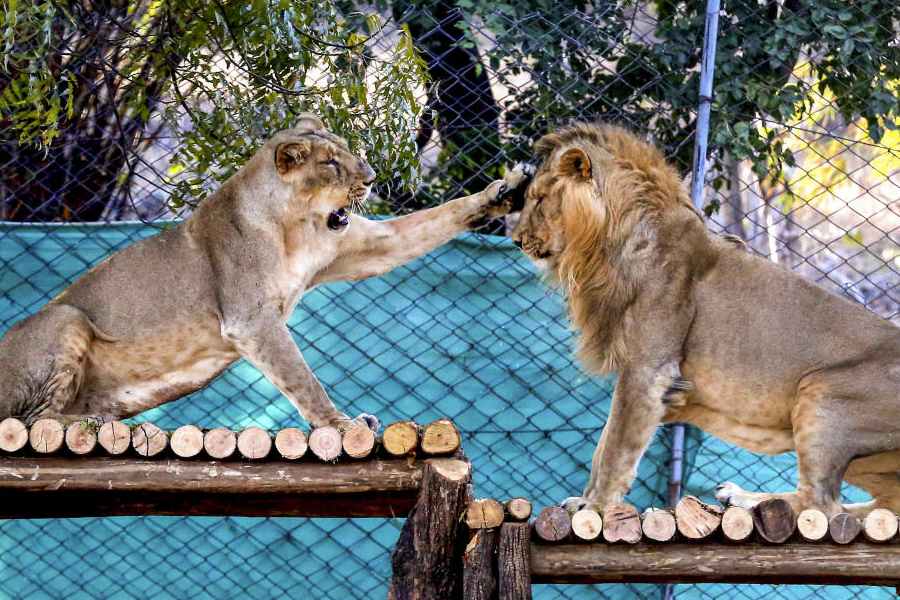Trap cameras deep inside Dehing Patkai National Park have captured the rare sight of a clouded leopard (Neofelis nebulosa), Assam’s environment and forest minister Chandra Mohan Patowary shared on his Facebook page.

Clouded leopard (Neofelis nebulosa); facebook/Chandra Mohan Patowary
Listed as vulnerable on the Red list of the International Union for Conservation of Nature (IUCN), the clouded leopard is a shy and elusive big cat found across the forests of the eastern Himalayas, northeast India and Southeast Asia.
Clouded leopards have also been sighted on the Sandakphu-Falut trekking trail in Bengal and Sikkim in the winters.

Clouded leopard (Neofelis nebulosa); facebook/Chandra Mohan Patowary
Dehing Patkai, often called the “Amazon of the East,” is Assam’s only rainforest and home to an array of wildlife, including elephants, hornbills, and pangolins. But this biodiversity hotspot – the park is a tropical wet evergreen forest – faces threats like poaching and encroachment.
Last month, minister Patowary had shared another important conservation news.
He wrote on his Facebook with pictures: “Our camera trap inside Dehing Patkai National Park just captured a rare sighting of an elusive Marbled Cat.”
The marbled cat (Pardofelis marmorata) is a small wild cat native from the eastern Himalayas to Southeast Asia, where it inhabits forests up to an elevation of 2,500 m. It has been listed as Near Threatened (NT) on the IUCN Red List.

Marbled cat (Pardofelis marmorata); facebook/Chandra Mohan Patowary
For conservationists, such findings are a crucial validation of ongoing efforts.
Camera traps are a crucial part of these efforts as they have been helping scientists track populations and assess habitat health. But how?
Usually, wildlife camera trap is a camera left at a location, rigged so that any approaching wild animal will automatically trigger the shutter release and take one or more photos or video sequences, without the photographer being present.












